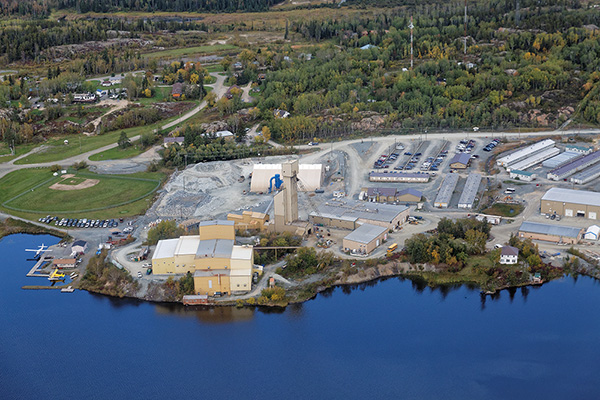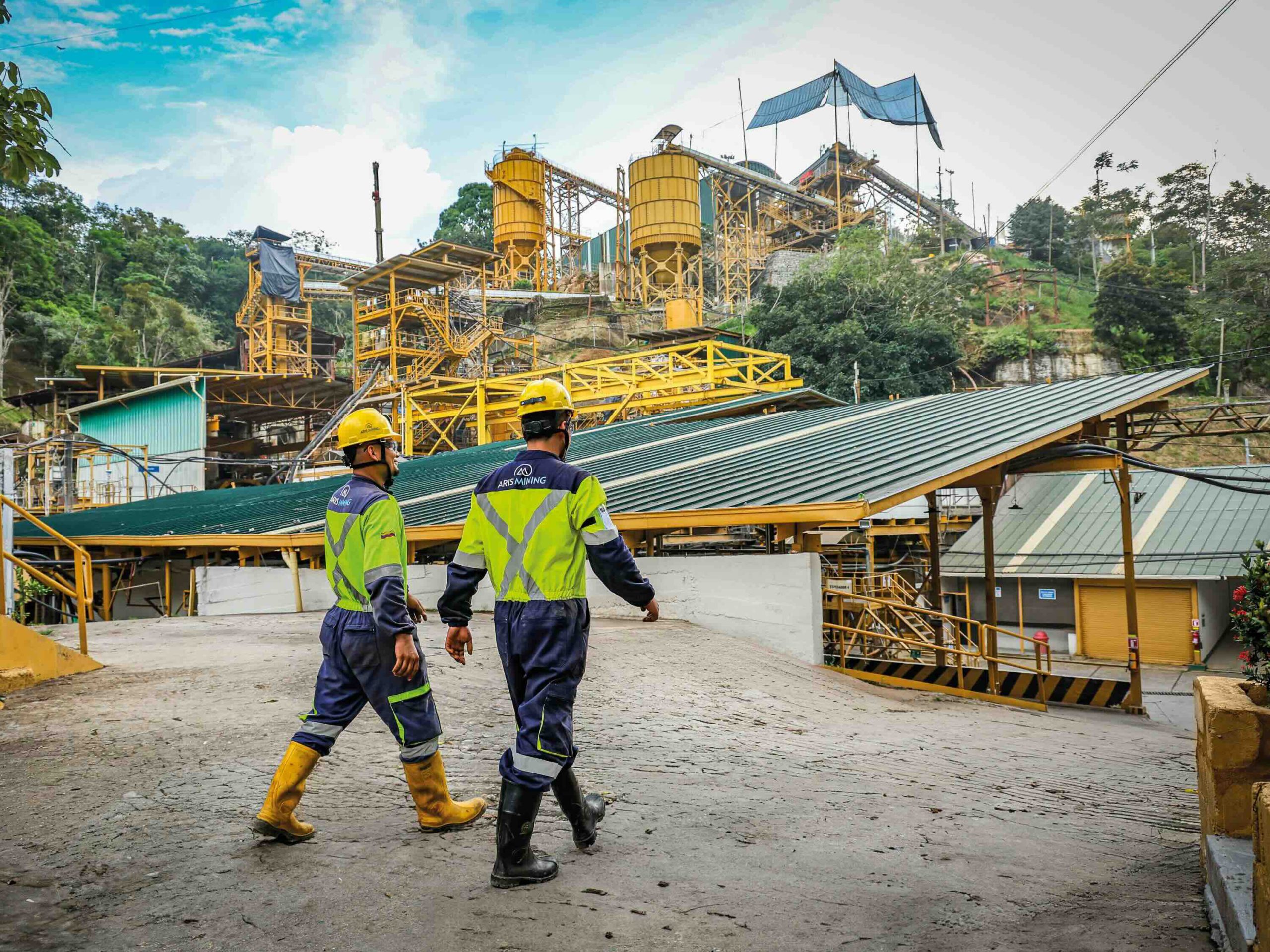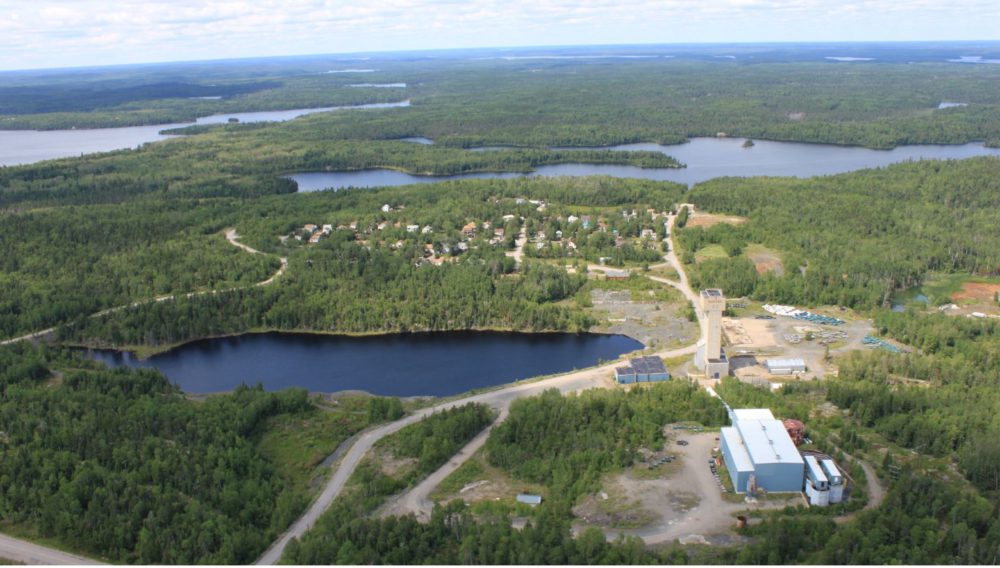Recent M&A highlights North American advantage

McEwen Mining’s El Gallo mine in Mexico. CREDIT: MCEWEN MINING
Canada’s gold miners — those that are financially healthy, at any rate — are on the move these days. They’re out shopping for properties, mostly in Canada, the U.S. and Mexico, but their motives are as mixed as the assets acquired. Some have taken advantage of distress sales of underpriced projects. Some are out to keep the production pipeline full, while others are seeking the safety of first-world jurisdictions and still others are acquiring size in order to make themselves more attractive to investors.

Alamos Gold’s Island gold mine in Ontario. CREDIT: ALAMOS GOLD
In October, Toronto-based McEwen Mining acquired the Black Fox mine, 65 km east of Timmins, Ont., from Primero Gold. Primero paid $300 million for the property in 2014, assumed $140 million in liabilities, spent $120 million on capital expenditures and exploration and then sold to McEwen for $35 million.
“We paid very little for it,” says company founder and president Rob McEwen. “It diversifies and increases our production base and expands our exploration potential in one of the world’s great gold districts.”
The property was mined intermittently starting in the 1960s, but has been producing non-stop since May 2009 when previous owners began extracting ore from an open pit. That operation has since been shut down, but underground mining has been ongoing since October 2011 and was projected to yield 11,000 oz. of gold in the fourth quarter of this year.

Underground equipment at Eldorado’s Lamaque. CREDIT: ELDORADO GOLD
The company will spend $15 million in the next 12 to 18 months on exploration and development. The mine is part of the Black Fox complex, which spans 17.5 sq. km, and McEwen says he and his team have identified several promising targets to explore. They also intend to develop new mine headings underground in order to increase the production and efficiency of the operation and to process more ore in their mill, which is currently running below capacity.

Integra Resources’ DeLamar project in Idaho. CREDIT: INTEGRA RESOURCES.
McEwen currently has a 49% interest in the San José mine in the Argentinian province of Santa Cruz and owns outright the El Gallo mine in Mexico’s Sinaloa State in the northwestern part of the country. But both of these operations have short operating horizons based on current reserves – five years for San José, which is a high-grade underground operation, and two and a half years for El Gallo, which is an open pit.
McEwen is reasonably confident that exploration will yield new reserves at San José, but the company faces a couple of challenges at El Gallo. “Next year, we’ll be close to the end of our oxide ores in Mexico,” he says. “We’ve outlined a growing base of sulphide ores. Now we’re looking for a way to treat them economically.”
The other issue is Mexico’s rampant crime and the company has experienced that first hand. “Two years ago we had a robbery at the mine,” McEwen says. “They took $8 million worth of precipitate, which was covered by insurance, and there’ve been a number of other robberies down there.”
Meantime, the company recently received its final permits to begin construction of its open pit Gold Bar mine in Nevada.
There is already equipment on site and McEwen hopes to have the mine in full production by late 2018. Gold Bar currently has a measured and indicated resource of 611,000 oz. in 22 million tons grading 0.95 g/t and 111,000 inferred oz. in 4.6 million tons grading 0.82 g/t gold.
Alamos scales up
Toronto-based Alamos Gold has three producing mines – Young-Davidson near Kirkland Lake, Ont. and Mulatos and El Chanate in the Mexican state of Sonora. It also has six development properties: three in Turkey, one in the U.S., another in Mexico and a third at Lynn Lake, Man. In mid-September, the company announced the acquisition of Richmont Mines and its underground Island Gold project in Dubreauville, Ont., 83 km northeast of Wawa.
The company pursued the Richmont deal for several reasons.
“I spent most of my career outside Canada,” says Alamos president and CEO John McCluskey. “There have been a number of very high-profile blowups in Eritrea, Indonesia, the Philippines and certain countries in Africa. My instinct has been to see the value of Canadian assets and to look for good quality, long-life, low-cost underground mines.”
The Island Gold project nicely fit those criteria. It has been in production for 10 years and was viewed as a low-grade, relatively shallow deposit until a new executive team, led by Renaud Adams, took control in August 2012. Renaud’s group launched an aggressive exploration program. By the end of 2016, Richmont had completed nearly 42,000 metres of drilling and discovered deposits hosting as much as a million ounces of gold between 400 and 1,000 metres below surface and open at depth.
“The orebody was getting better the deeper they went,” McCluskey says, noting it expanded from 4.5 metres in width to 6.5 metres while the grade improved from 4.8 g/t gold to over 9 g/t.
“They started to attract our attention two and a half years ago.”
McCluskey’s strategy has been to increase high-quality production and he’s been doing it year over year. The company’s output has grown from 140,000 oz. in 2014 to 380,000 oz. in 2015 and will exceed 400,000 oz. this year. Island Gold will add 100,000 oz. in 2018 and Alamos expects to hit 600,000 oz. in 2019 when one of its Turkish projects comes on stream.
“We’re one of the fastest growing gold companies in the world,” he says. “We’re making money, we’re debt free and we’re financing growth out of cash flow.”
Nevertheless, the company’s stock has taken a pounding due to the power of huge investments funds that now dominate the markets. The stock was trading at just over $13 in August 2016, but had been knocked back to about $8 by March of this year after one of these funds dumped 25 million shares of Alamos. And even after the Richmont deal was announced, it hadn’t recovered.
“The funds don’t give a damn about technicalities, mine type or political risk,” McCluskey says. “They’re completely agnostic about the management team and the business. They’re just driven by numbers. We need scale. We need to consolidate and achieve sufficient size. Our merger with Richmont makes perfect sense in the context of the stock markets.”
Eldorado looks for quality first
Like Alamos, Eldorado Gold of Vancouver has three operating mines and annual production of just under 500,000 oz. The company has two gold mines in Turkey and a smaller silver-leadzinc mine in Greece. In July 2017, Eldorado paid US$360 million to acquire the Vancouver-based junior Integra Gold and its Lamaque gold project near Val d’Or, Que.—the objective being to develop a high-grade underground mine capable of producing upwards of 125,000 oz. annually.
“We’re agnostic when it comes to jurisdiction,” says Jason Cho, vice-president, corporate development. “An asset needs to stand on its own technical merits and Lamaque ticked a lot of the boxes for us.”
The property is located in Abitibi region, which has historically been one of the most productive mining camps in the world. It is adjacent to the town of Val d’Or, well served by infrastructure, and the company can draw on a highly skilled local labour force. Lamaque currently hosts indicated resources of 1.5 million oz. gold in 5.1 million tonnes grading 9.13 g/t (at a 5 g/t cutoff grade).
Eldorado plans to explore and develop the Triangle deposit within the Lamaque property. The latter includes the Sigma- Lamaque complex, which was previously mined by two majors, Placer Dome and Teck Corp., but Triangle is a new discovery where modern exploration and mining methods are being used.
The company is currently applying for a mining permit and will be applying for another to restart the tailings and mill on the property. Eldorado plans to issue a prefeasibility study in the first quarter of 2018. It is currently in the midst of an aggressive technical study that will include around 73,000 metres of drilling within the Triangle deposit not included in the March 2017 resource and another 17,00 metres elsewhere on the Lamaque property.
“We haven’t come out with a specific date or time period for production,” says Cho. “The expectation is that we would be shooting for production by late 2019 or early 2020.”
Integra takes off the blinders
After selling Integra Gold, three former executives of the company launched a new venture called Integra Resources and in early September, they announced their first major deal — the acquisition of the DeLamar gold and silver project in southern Idaho from a subsidiary of Kinross Gold.
The property has been mined intermittently since the late 1800s, yielding 1.6 million oz. of gold and 100 million oz. of silver. But for almost two decades now, it has sat dormant. The last producing mine was a low-grade, near surface operation that was shut down due to low precious metal prices.
Integra CEO George Salamis and his team decided DeLamar was worth a second look despite its history as a producing property. For one thing, historical records from the end of the 19th and start of the 20th centuries showed high-grade veins yielding as much as 15 grams per ton below the shallow deposit.
“When a mining company works an orebody over a long period of time, they put the blinders on,” he says. “They’ve tested everything within the parameters of what they’ve been doing and they decide there’s nothing there.”
Salamis intends to prove them wrong by going deeper. His company plans to be “aggressive with the drill bit,” just as they were at Lamaque. They’ve budgeted for 20,000 metres of drilling in the next 12 to 18 months. They will incorporate the results of their exploration program, along with the wealth of historical data and will publish a preliminary economic assessment based on the results.
As for their long-term plan, Salamis says it all depends on what they find, but he is confident there is a rich resource awaiting discovery at depth.





Comments